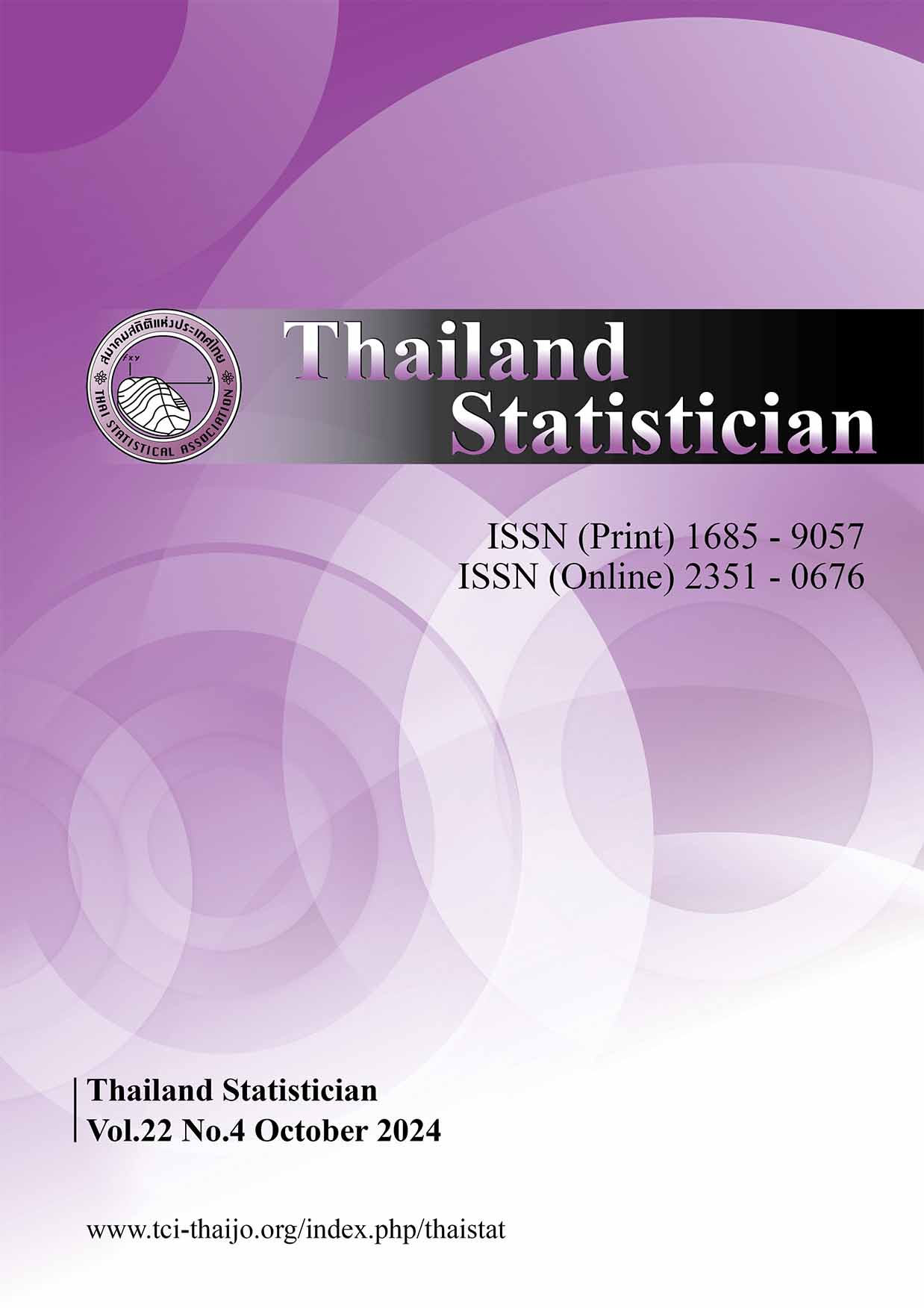Average Run Length Approximation on a Double Exponentially Weighted Moving Average Control Chart through the Numerical Integral Equation Approach
Keywords:
Average run length, numerical integral equation, DEWMA chart, EWMA chart, comparisonAbstract
In this paper, we suggest utilizing the midpoint rule, trapezoidal rule, Simpson’s rule, and Gaussian rule in conjunction with the Numerical Integral Equation (NIE) method to estimate the Average Run Length (ARL). These techniques are applied to the Double Exponentially Weighted Moving Average (DEWMA) control chart in situations where the observations follow continuous distributions, like the Weibull and exponential distributions. Furthermore, we contrast the Exponentially Weighted Moving Average (EWMA) control chart’s performance with that of the DEWMA control chart. Out-of-control Average Run Length (ARL1) and CPU Times are the performance metrics. All of the methods perform similarly, according to the results. It is clear from the results that the DEWMA control chart performs better than the EWMA control chart. Additionally, a wide range of real-world datasets can be used to illustrate the efficacy of the suggested method by applying the NIE method to approximate the ARL.
References
Champ CW, Rigdon SE. A comparison of the markov chain and the integral equation approaches for evaluating the run length distribution of quality control charts. Commun Stat Simul Comput. 1991; 20(1): 191-204.
Ishikawa K. Guide to quality control. Japan: Asian Productivity Organization; 1976.
Mititelu G, Areepong Y, Sukparungsee S, Novikov AA. Explicit analytical solutions for the average run length of CUSUM and EWMA charts. East West J Math. 2010; Special edition: 253-265.
Mastrangelo CM, Montgomery DC. SPC with correlated observations for the chemical and process
industries. Qual Reliab Eng Int. 1995; 11: 79-89.
New York State Open Data. MTA subway customer journey-focused metrics [serial on the Internet]. 2015 [cited 16 Nov. 2023]. Available from: https://data.world/data-ny-gov/r7qk-6tcy.
Page ES. Continuous inspection schemes. Biometrika. 1954; 41(1-2): 100-115.
Roberts SW. Control chart tests based on geometric moving average. Technometrics. 1959; 1(3): 239-250.
Shamma SE, Amin RW, Shamma AK. A double exponentially weighted moving average control procedure with variable sampling intervals. Commun Stat Simul Comput. 1991; 20(2-3): 511-528.
Shamma SE, Shamma AK. Development and evaluation of control charts using double exponentially weighted moving averages. Qual Technol Quant Manag. 1992; 9(6): 18-25.
Shewhart WA. Economic control of quality of manufactured product. New York: D. Van Nostrand Company, Inc; 1931.
Tang A, Castagliola P, Sun J, Hu X. Optimal design of the adaptive EWMA chart for the mean based on median run length and expected median run length. Qual Technol Quant Manag. 2018; 16(4): 439-458.
Downloads
Published
How to Cite
Issue
Section
License

This work is licensed under a Creative Commons Attribution-NonCommercial-NoDerivatives 4.0 International License.




